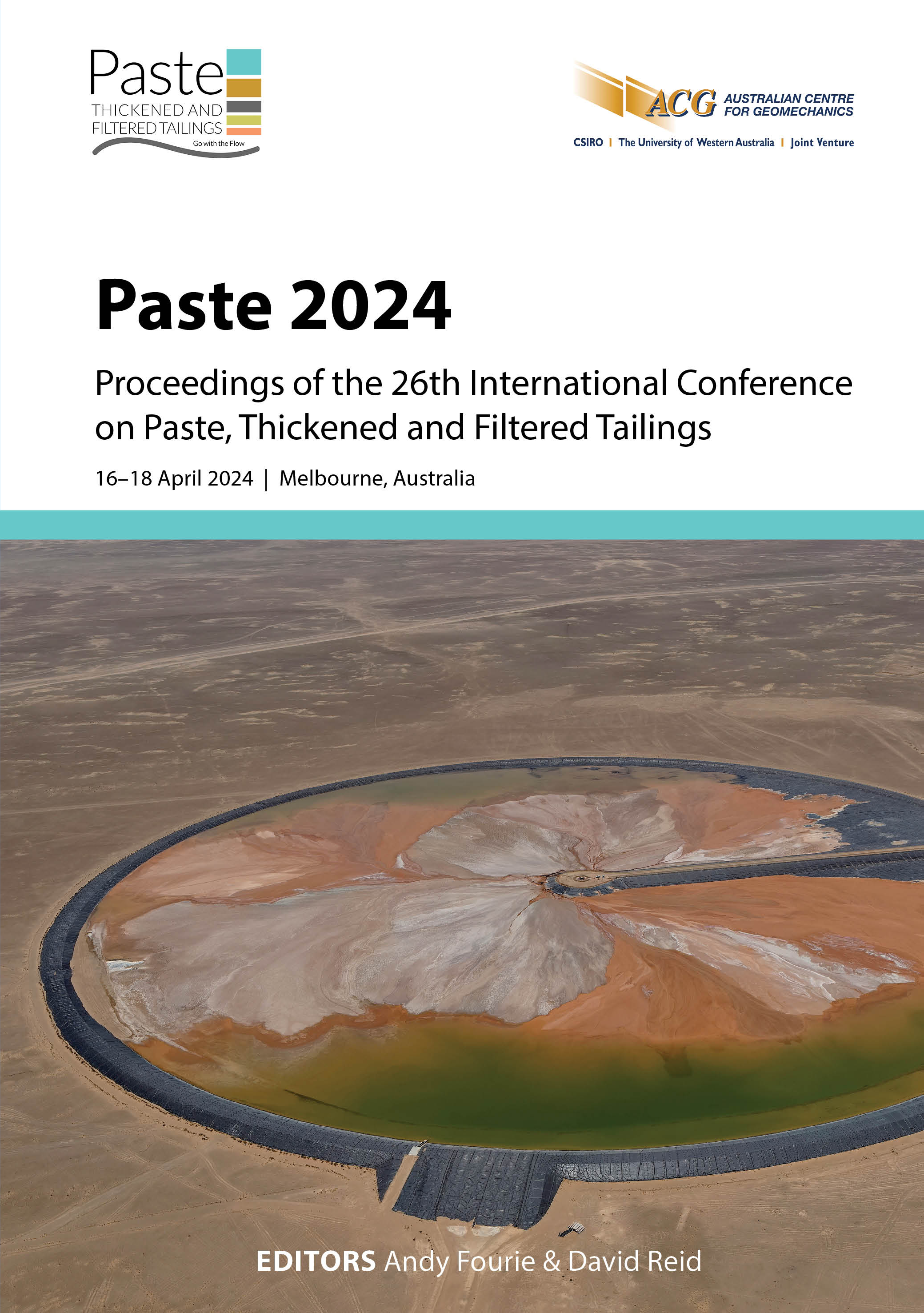Availability of piston-diaphragm pump in paste fill: cement savings

|
Authors: Gamboa, U; Castilla, A |
DOI https://doi.org/10.36487/ACG_repo/2455_36
Cite As:
Gamboa, U & Castilla, A 2024, 'Availability of piston-diaphragm pump in paste fill: cement savings', in AB Fourie & D Reid (eds), Paste 2024: Proceedings of the 26th International Conference on Paste, Thickened and Filtered Tailings, Australian Centre for Geomechanics, Perth, pp. 453-464, https://doi.org/10.36487/ACG_repo/2455_36
Abstract:
It is well known that cement is the most representative cost in the operation of a paste plant (Granlund 2020). It plays a crucial role in preparing the recipe for paste to be poured into the different underground chambers to ensure sufficient strength on exposure, depending on the mining method. In this paper, we aim to evaluate how the use of an available paste pump using piston–membrane technology has a significant positive impact without incurring additional operating costs due to using too much cement. This will significantly improve the availability of the conventional cement pump systems that have been used for decades in the application of paste fill. The design and filling standards of the Aguas Teñidas filling plant and the data obtained will be used as an example in this paper. The client is Sandfire MATSA who use a cut-and-fill exploitation method, which has been using two ABEL® piston–membrane pumps since 2020 for pumping cement paste into the Castillejitos body. Sandfire MATSA is located in southwest Spain and is at the forefront of innovation for processes and equipment to develop efficient and environmentally sustainable mining. Proof of this can be seen in its commitment to piston–membrane pumping equipment when it became the first facility in the world to develop this innovation.
Keywords: paste fill, piston-diaphragm availability, cement savings
References:
Granlund, D 2020, Backfill Cost Reduction: Designing Around Hydraulic Capability, viewed 3 October 2023,
© Copyright 2025, Australian Centre for Geomechanics (ACG), The University of Western Australia. All rights reserved.
View copyright/legal information
Please direct any queries or error reports to repository-acg@uwa.edu.au
View copyright/legal information
Please direct any queries or error reports to repository-acg@uwa.edu.au
